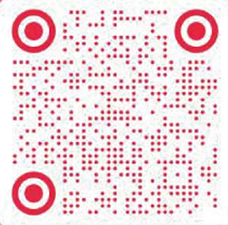Duration: 2019.07.25 -- 2019.08.04
Location: 1st Floor, Hall 3, Today Art Museum
This
is an exceptional exhibition. Through several series of her paintings, Ling Hui
has created precisely an expanse that is open and vast, pure and tranquil. As a
poem by Su Shi describes: “while openness enables an acceptance of everything.”
This imagery of an infinite expanse, devoid of people, precisely emphasizes the
quality of being “open”. It needs to be pointed out that although the paintings
appear empty, they are not in actuality unoccupied by people, because mankind
as the subject that perceives nature and creates art, is always present, only
the artist has removed him to outside the scope of the paintings.
Ling
Hui painted many landscape paintings in the earliest period of her creative
career, for quite some time, she was accustomed to placing a person in the
foreground of her landscape paintings, often showing the back of a person
looking at the scenery, or walking into the scenery, to indicate the presence
of the subject.However, slowly and unconsciously, the scenery in her paintings
evolved: people are no longer present. What is left are part of nature, mountains,
clouds, the sea, a blue sky, and glaciers, etc. People have been integrated
into nature and dissolved into the boundless universe. From a “space of no
one”, she has transitioned into a “space of no self”. Thus, the artist is no longer painting “landscapes”
in the general sense, much less reproducing a “real scenery” from the real
world. She has achieved an open expanse in which the subject and the object
have dissolved into oneness. If “scenery” can be said to be a literal“image” then “expanse” is a
“imageless image”, as in a figurative representation that transcends “image”
alone; if “scenery” is a “small image” limited to visual perception, then
“expanse” is a figurative and formless “infinite image” (as Laozi said, “the
infinite image is shapeless”). The universe is vast, without form or boundary.
When the artist is elevated into a vision of “inexhaustible inspiration” and
“all-seeing perception”, she is able to see the infinite image of mountains,
and the infinite beauty of heavens and earth. Her aesthetic perception of the
vast space outside the limited scope of human existence is precisely
confirmation of mankind’s continuously expanding power of cognition and
aesthetic judgement.
But
how can the artist capture her spatial perception of such “infinite image” and
“infinite beauty” and embody them on a finite canvas? Ling Hui has resolutely
abandoned the traditional approach of directly reproducing nature, and
transitioned from three-dimensional to four-dimensional expression, and,
through the superposition, accumulation, deconstruction and reconstruction of
“time slices”, presents the new consciousness of time and space from a
contemporary artist. She has concentrated on showcasing her perception and
expression of time and space in the series “Mirror of Time and Space”, which is
composed of nearly a hundred pieces. Every piece, completed in a different time
and space, is a “time slice” of what she calls “color samples”. The sea, when
it is represented by nearly a hundred such “time slices”, is no longer the sea
as we usually see it. It is a reconstruction after being broken down into
pieces. Neither is it a purely spatial expression any longer, but space that
has been re-rendered after being sliced by time, much like a prism that has
been flattened. It is both a combination of spaces in different times, or a
misplacement of time in different spaces. It represents both time in different
spaces and space at different times, so that time and space, interlaced in this
way, expands both our established field of vision, and changes our conception
of time and space.
From
an early age, Ling Hui has been curious about space with its many stars
scattered across. One day, she finally told her father her “amazing discovery”:
“The moon is following me!” Since then, her curiosity about the mysterious
universe has sprouted like a seed in her heart. Looking back today, Ling Hui’s
amazing childhood discovery about the night sky took place during the beginning
of her artistic journey, when the interdependence and entanglement between time
and space finally formed the starting point of her artistic expression.
Instead, as she faces the boundless cosmos that is ever vital and constantly
evolving, and perceives a sense of grandeur and vitality, she is actually
returning to the aesthetic origin of Chinese paintings, that is, the perception
of “Dao”. Such a magnificent view of the universe has not only nurtured a new
spiritual transcendence in her art, but has also enabled new explorations in
terms of ideas and techniques. In this immense universe, she can experience and
appreciate the vicissitudes of the cosmos, the rise and fall of history, the
impermanence of life and the sweetness and bitterness of being alive.
Many
poets in Chinese history have looked up at the universe and expressed their
stunning emotions. In Heavenly Questions,
Qu Yuan successively raised more than one hundred and seventy questions about
all things in the universe.It can be said that Qu Yuan was the first person in
the world to ask questions about the origin, structure and evolution of the
universe. Today, we see that a young artist, Ling Hui, has expressed her
understanding of time and space, her longing for infinite and eternal time and
space, and her respect for the universe with her own new conceptions of time
and space and unique artistic techniques.
Mankind constantly introspect as he gains new understandings of the world, and thus sees his own limitations. It is also the realization of the smallness of the limited life of the individual, in reference to infinity, that gives us the desire to constantly expand this “limitedness”. In this unknown field, there are not only the unremitting explorations of unknown space by astronomers, but also artists’ “inspiration and communication from all eras”, “unconstrained by time and space”. Their creations move us not because they replicate the world, but because of the visual charm innate in the work. In this way, this exhibition of Ling Hui’s art creates for us a rich space in which to imagine, and in the perception of nature, returns our gaze to the subject that is perceiving. It is these omnipresent, mysterious, and ever-changing celestial bodies and phenomena that make us realize the magnificent generosity, breadth of mind, and love for the cosmos that we, as the subject, ought to have.
Today Art Museum, Building 4, Pingod Community, No.32 Baiziwan Road, Chaoyang District,Beijing. Tel: 010-58760600
Opening Hours:10 am - 6 pm: closed every Monday and during Spring Festival(2.13-2.23).
© 2005-2023 Today Art Museum
京ICP备13015009号-1
Tech Support:Today Digital Art Museum











